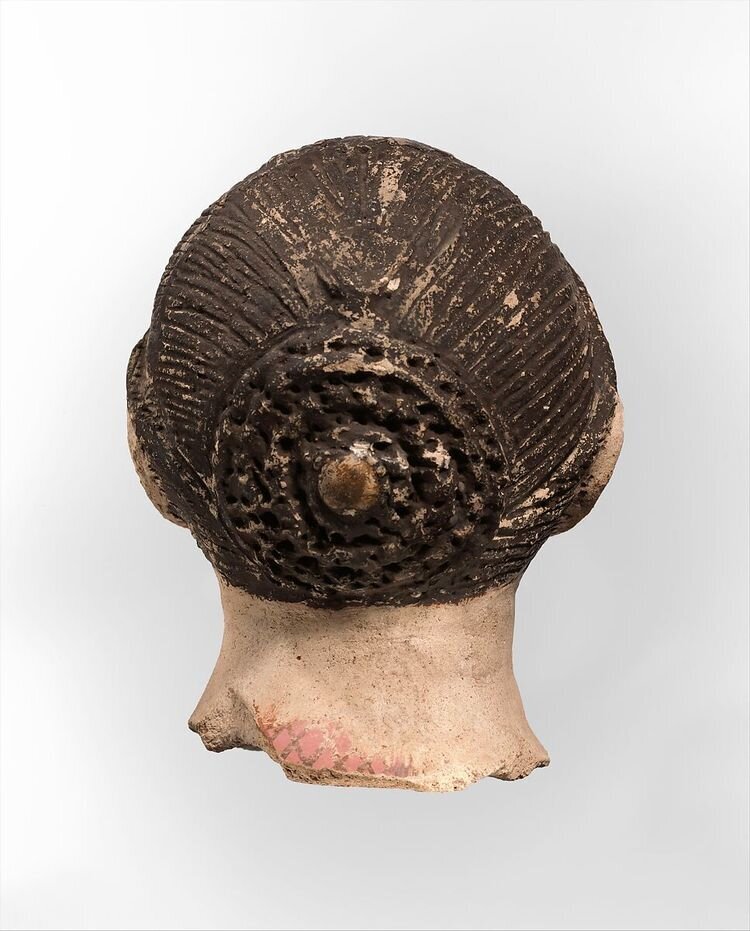16 amazing artifacts that surprise us with their beauty (18 photos)
We love to delve into the past and find there clear evidence that people who lived in past centuries were similar to us and lived almost the same lives, except for the absence of high-tech gadgets and branded clothing. 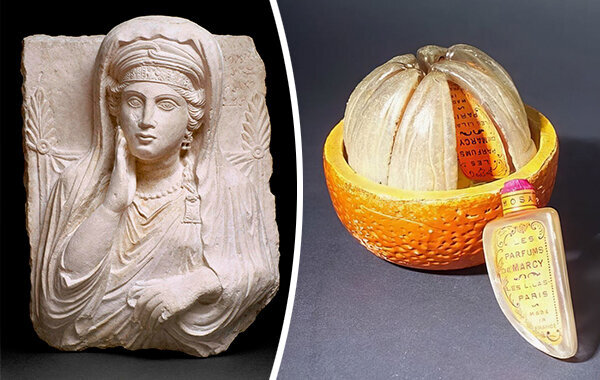
Our ancestors also went to school, where the teacher corrected their mistakes in red ink, wore shoes and clothes, erected buildings and were creative, creating things that we still admire today. Therefore, sit back and enjoy our article on artifacts, thanks to which today you can learn a lot of new and useful information about the past.
Powder flask carved from horn, Northern Europe, 1530-1535. 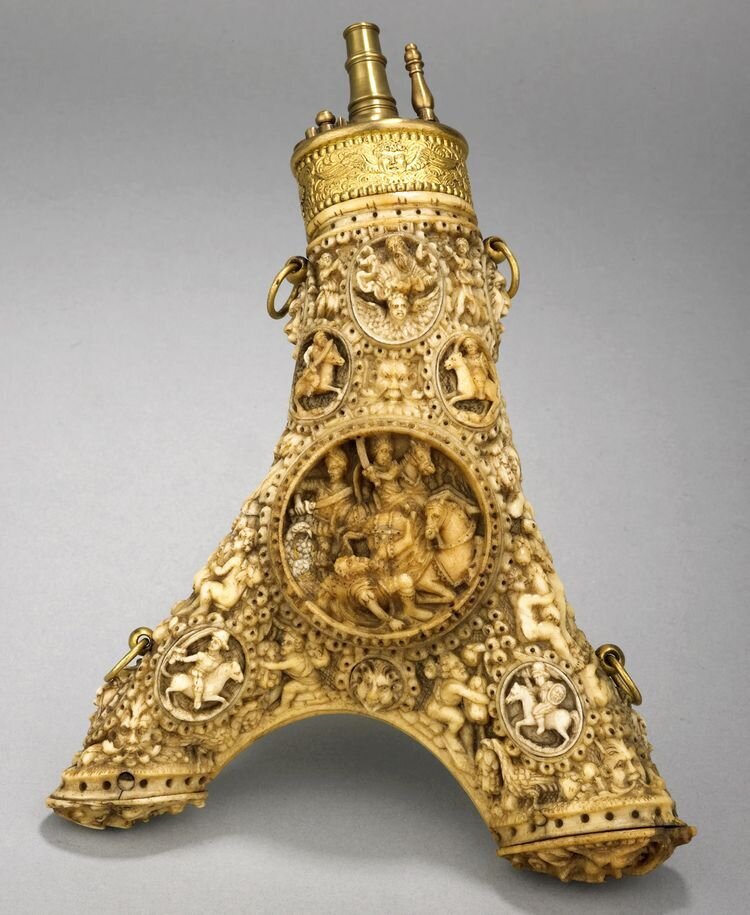
Some incredible level of skill, how is it even possible to cut something like this?
This powder flask with two branches was skillfully carved from horn. In the center is a scene depicting either the Conversion of Emperor Constantine or the Conversion of Saint Paul, around which are four smaller oval areas depicting horsemen, one of which depicts God the Father. The area around them is skillfully carved in bas-relief with figures of cupids, masks and foliage
The Villa of Livia, wife of Octavian Augustus, was discovered in 1863 in Prima Porta, north of Rome, Italy 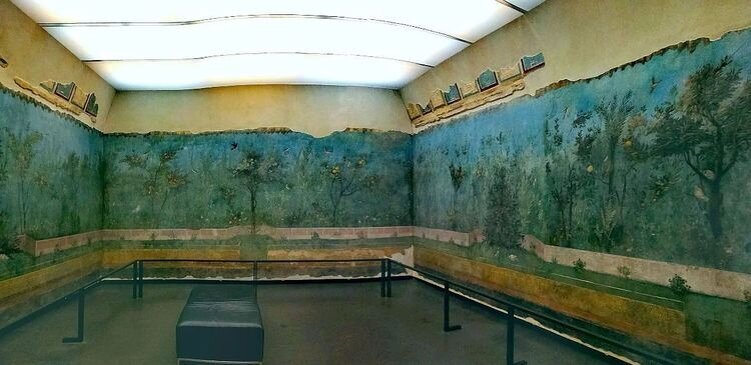
A real sensation was the discovery of an underground room, the walls of which were completely decorated with an amazing fresco depicting a summer garden. On the walls you can see an elegant fence with niches, a variety of fruit trees, birds and a well-groomed lawn. The blue of the sky is combined with the green of the vegetation, and it all creates a wonderful, calming landscape. Probably during summer meals 2000 years ago (most likely, this room was a dining room used in hot weather) Livia's eyes looked at the same idyllic scene that can be admired today in Rome's Palazzo Massimo
Possibly the oldest shoe in the world 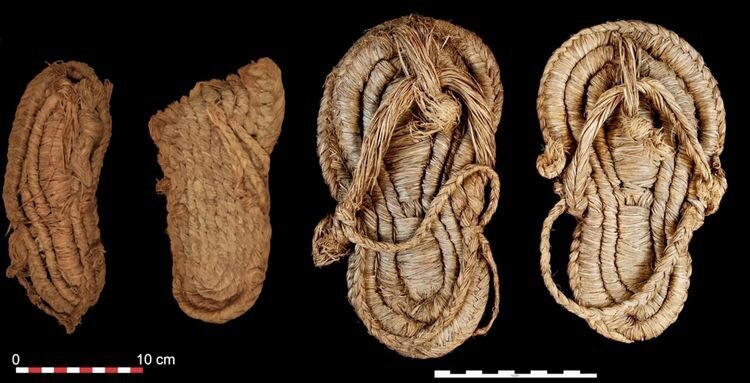
Sandals found at Cueva de los Murcielagos in Spain, a key Neolithic archaeological site, 7500–5000 AD. BC.
The age was determined using carbon-14 analysis, the results of which showed that the sandals from the Bat Cave in the city of Albuñola are the oldest in southern Europe, made by the first Neolithic farming communities, and may be the oldest shoes in the world. Unknowingly, many of these finds served as fuel for local residents' stoves, were distributed among local residents, or were simply lost forever.
Greenlandic tupilak - a terrifying magical creature of the Greenlandic Eskimos, made of complex natural materials, which was supposed to bring death and misfortune to another person 
If you are already tempted to recognize the tupilaks as cute monsters, then you should stop right now. What you see in the photo are not real tupilaks, but simply figurines made by artisans (often for sale to tourists) from walrus ivory or reindeer antler. Real tupilaks were made by shamans from parts of the bodies of dead animals, and sometimes even people, in order to instill spirit in them and send them to deal with their sworn enemy, for which, after making, the figure had to be thrown into the water. It is reported that making tupilaks was prohibited and this ritual was carried out secretly. Since these figures were made from perishable materials, not a single tupilak has survived to this day.
The oldest failed school test in history, about 4,000 years old 
The photo shows a student's tablet from Middle Egypt, 1981-1802. BC e. The teacher corrected spelling errors with red marks. It turns out that red pen corrections are at least 4,000 years old! Many emperors and generals are lost in history, but they still talk about the Egyptian loser even 4,000 years later. Well, what incentive is there to study well?
Hidden self-portrait of Vincent Van Gogh, hidden under layers of glue and cardboard on the reverse side of the painting "Head of a Peasant Woman" 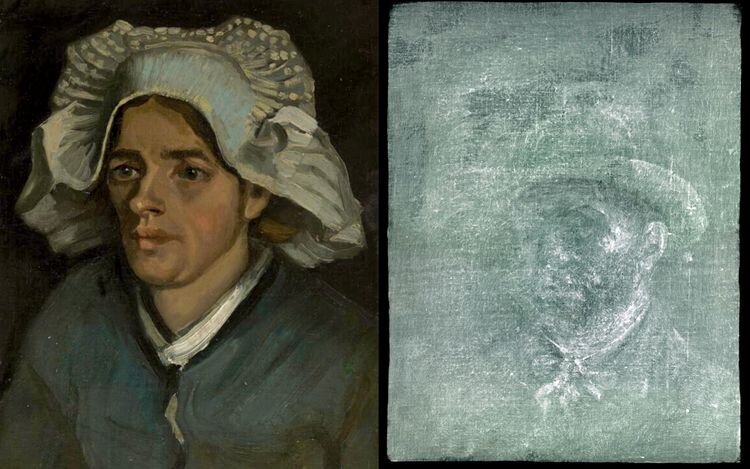
X-ray examination of the portrait reveals a ghostly glimpse of the bearded artist gazing intently at the viewer, 1885.
Van Gogh probably painted the self-portrait during a crucial period of his career, when he became acquainted with French Impressionism in Paris. Impressionism had a profound influence on Vincent's work, inspiring him to a more colorful and expressive style of painting. Reportedly, the artist may have later painted a self-portrait on the back of an already used canvas and left it unfinished, and then someone decided to cover up the self-portrait and place only the portrait of the woman
Wooden dagger with shark teeth, Kiribati, 19th century 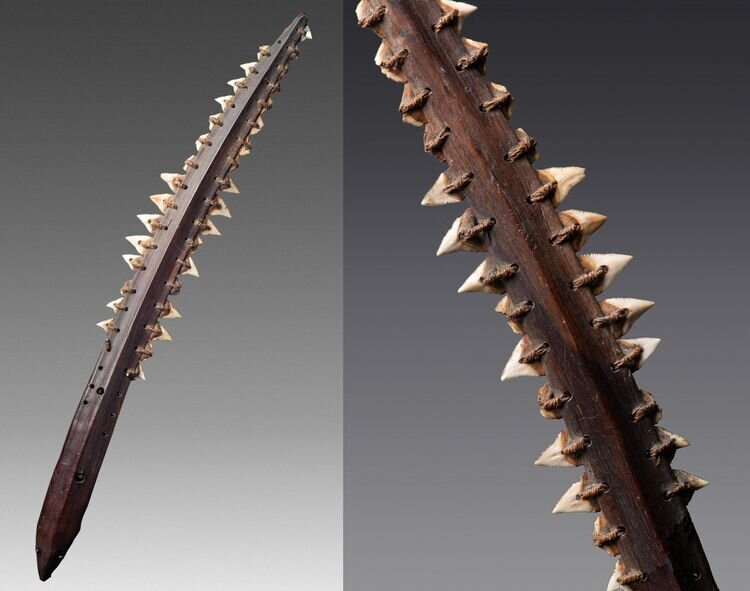
Why bother finding metal, mining it, processing it, melting it, forging it and sharpening it, when you can simply attach someone else's sharp teeth to flat wood. Apparently, this is precisely the logic followed by the inhabitants of the equatorial state in the central Pacific Ocean of Kiribati. Despite our comic (but fair) description, the weapon looks very menacing, but it was created more for intimidation. The fact is that in traditional Kiribati culture, a person who took someone’s life (even in a fair fight) paid with his most valuable resource - his land. Therefore, instead of a lethal outcome, the warriors only sought to wound and humiliate their enemy
Funerary monument-portrait of a woman named Ummayat, Palmyra, c. 100–200 AD 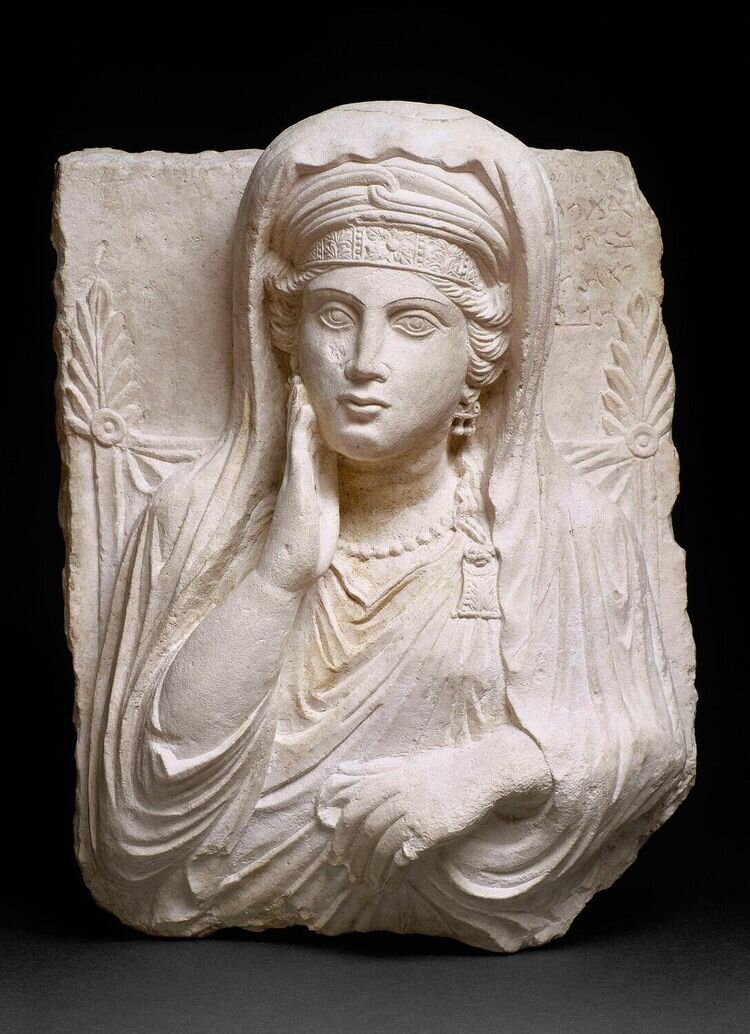
Users noted that the sculpture had rather strange fingers and decided that the sculptor paid more attention to the face. The sculpture is currently kept in the Louvre, Paris
Wooden bust with human hair and pigments, inlaid with an abalone shell. New Georgia, Solomon Islands, 19th century 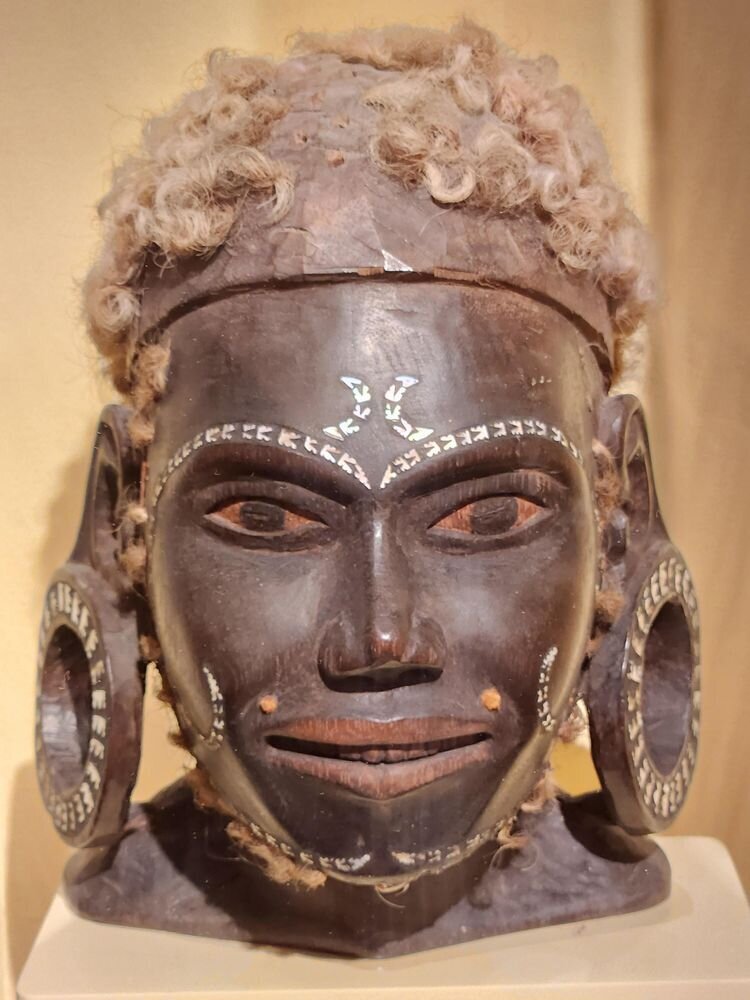
The inlay pattern and large lobe decorations showcase the war paint and decoration of the people of New Georgia, the largest islands of the Western Province of the Solomon Islands in the South Pacific. The hair included in this large-scale work may have been obtained from headhunting. By the way, the blond hair on the bust is not due to burnout, but to the fact that the Solomon Islands have one of the few populations of natural blondness outside of Europe. The bust is currently kept in the Newark Museum of Art, Newark, New Jersey, USA
Perfume bottle consisting of eight glass bottles in the shape of orange slices set in a painted ceramic stand, 1925 
Fragrances included: chypre, amber, heliotrope, rose, jasmine, mimosa, lily of the valley, lilac, violet and hawthorn blossom. It's funny that with this form there is not a single citrus note in the perfume, except for chypre, of course. It is obvious that some scents were mixed, since there are only 8 bottles, and there are 10 declared scents
Relic with the hand of St. Basil, c. 379, Greek Orthodox Church of St. George, Venice 
The temple was built in 1577 after the founding of a Greek colony in Venice. Most of the money for the construction of the church was provided by the Greek community of the entire city, but part was also financed by Venice, through taxes on all ships arriving from Orthodox areas
Ancient Etruscan carved ivory comb, c. 6th century BC 
The main decor of the crest consists of two lions with their muzzles facing each other and carved Greek ornaments. The comb was created in Naples, Italy, but is currently on display at The Walters Art Museum, Baltimore, Maryland, USA
Black leather book storage bag, Italy, ca. 1465–1485 AD 
The top of the bag reads "Remember Me" in Latin and the bottom features the Holy Trinity. The bag shows signs of repairs made by stitching one of the lower corners. This bag is currently kept in the Morgan Library and Museum, Manhattan, New York, USA
Portrait of a red-haired woman, 1st century AD. 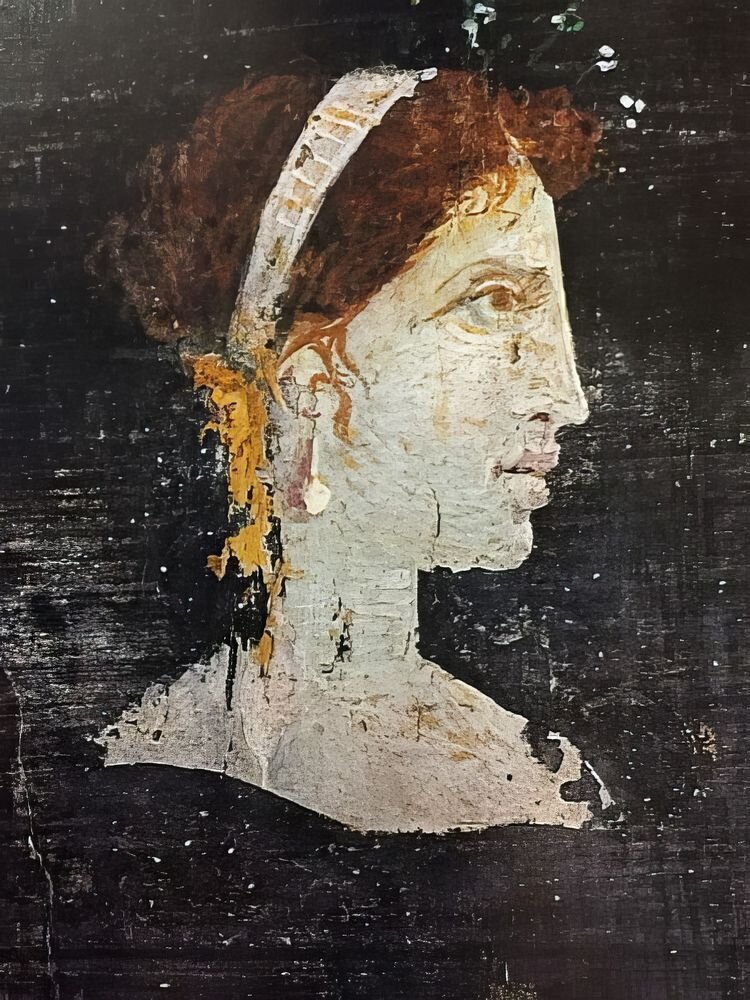
In one of the villas of Herculaneum (an ancient Roman city in the Italian region of Campania, near the modern city of Ercolano) a portrait of a red-haired woman was discovered. Her facial features, royal tiara and hairstyle, decoratedtiny pins with pearls, suggestive of the posthumous image of Cleopatra VII
Official outfit for a boy from a samurai clan. Japan, Edo period, 1800-1850. 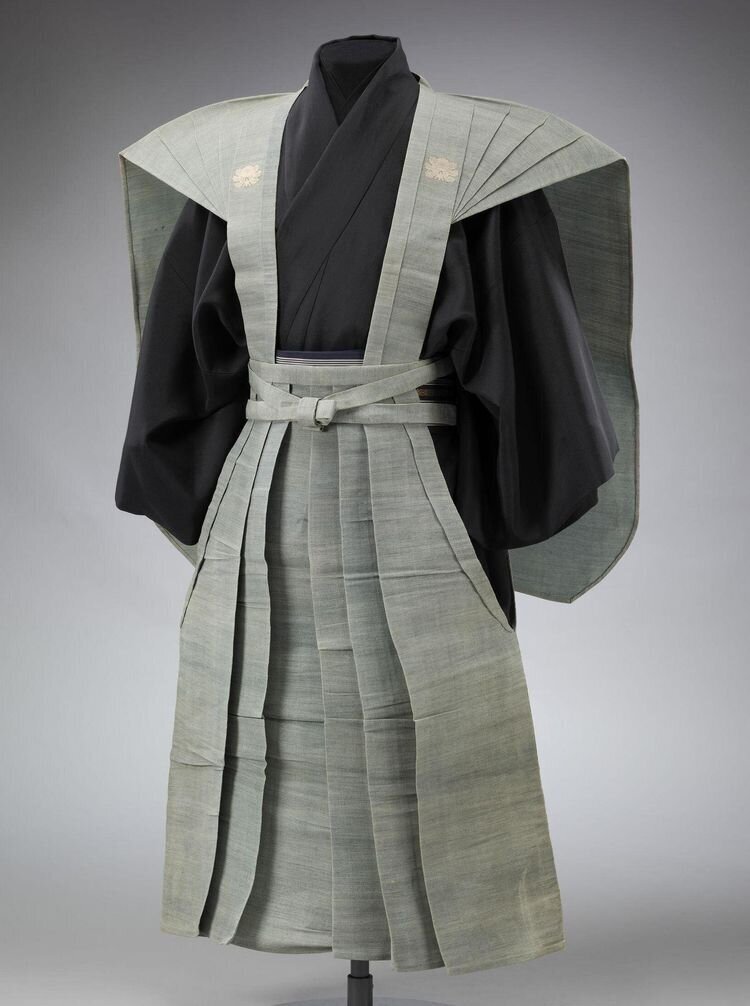
This costume is called kamishimo, which literally translates to “top and bottom.” Japanese two! This costume is kept in the Victoria and Albert Museum, London. The top part is a historical piece of clothing, while the dark kimono is modern, and was added by museum staff to show what it looked like when assembled.
Plaster Egyptian funerary mask, Roman period, 250–300 AD. n. e. 
This is similar to the painting of Christ that one woman tried to restore, but ended up ruining everything. Many users saw Mark Zuckerberg wearing this mask.
This mask is made of plaster and painted with paints widely used in Egypt at that time.
This is what this mask looks like from the back 